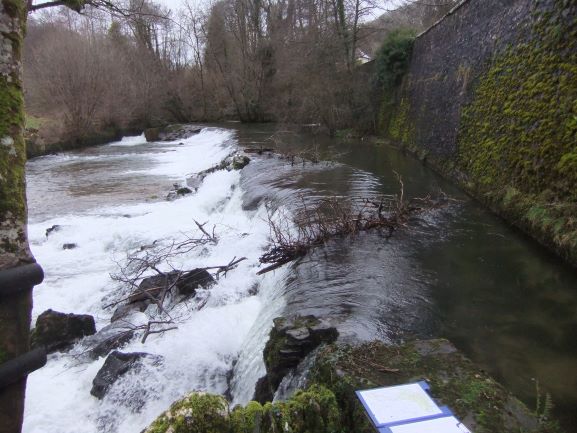So what defines a site as ‘design live’? Put simply, where site surveys are being performed to enable the technical design stage to begin and progress.
To get to this stage, a site has gone through a rigorous and standardised Options Appraisal and Constraints Assessment process. This means relevant permissions have been gained to progress, and all limiting factors have been identified and assessed to produce an agreed bespoke concept to improve fish migration.
This is then developed by specialist design engineers through various development stages, while relevant permissions are sought for construction preparation. Each Strategic Exe Weirs (SEW) site is at a different stage of this process, due to individual site characteristics and challenges, which, in part, is how progress to design stages is determined. The first actively live sites for SEW are…
Bolham Weir
Located a short distance north of Tiverton, Bolham weir is a modern construction over a historic weir site. In an engineering sense, the modern design is strong and resilient against the powerful spate flows that occur in the River Exe. However, the smooth concrete and carefully controlled hydraulic conditions create significant challenges for all migratory fish.
It is proposed that a technical super-active baffle fishway and studded-tile eel pass be installed for upstream migrating fish, and a screen and chute be installed to encourage safe passage in the main river for downstream migrating fish.
Bridgetown Weir
Located within Exmoor National Park, Bridgetown weir is providing significant challenge for all migratory fish species heading for the pristine headwaters of the upper River Exe. A significantly sized weir in relation to location within the catchment, Bridgetown weir limits passage to all but larger salmonids (salmon and sea trout) apart from exceptional flow conditions. This is in part due to the current fish pass, constructed in the 1950s, which is insufficient to provide much-improved access.
It is proposed to replace the existing fish pass with a technical super-active baffle fishway and studded eel pass for upstream passage, coupled with a screen and chute to divert downstream migrating fish away from the leat and safely over the weir into the main river.
Both weirs will remain, with associated continued impacts on natural geomorphological processes. However, access will be vastly improved for all River Exe native fish species at each site, lending towards reducing the cumulative impacts of multiple weirs, and thereby helping to secure the ecological integrity of the river for future generations.

